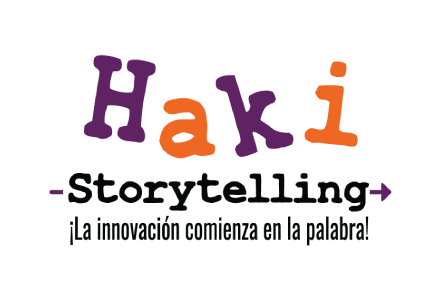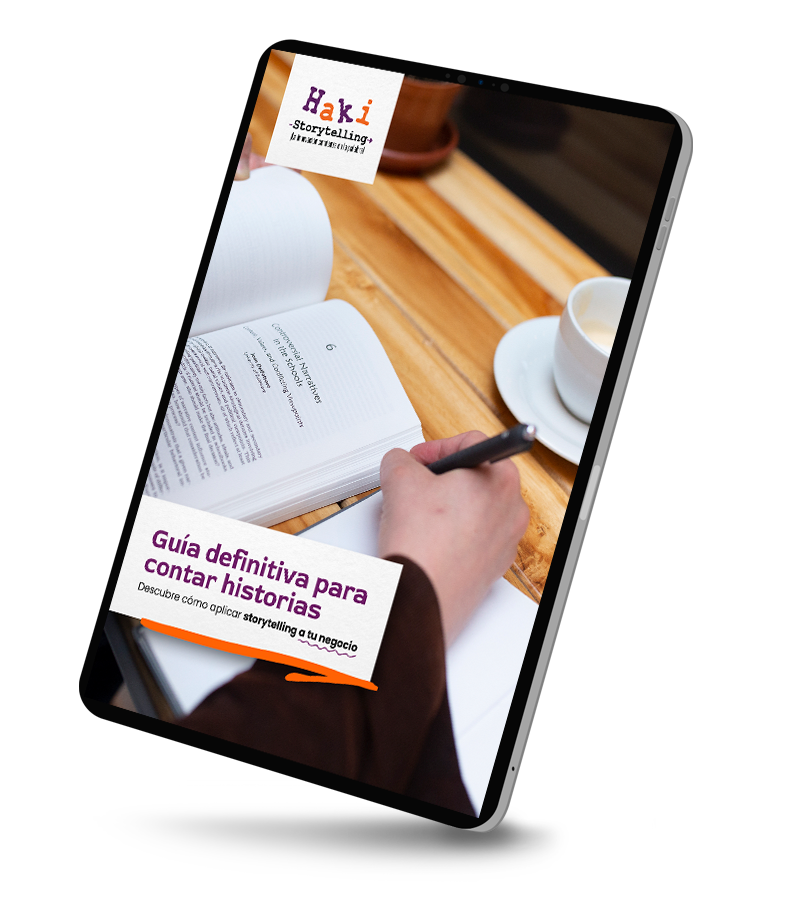Cuando me uní a Instagram hace algunos años, lo primero que hice fue buscar cuentas que tuvieran algo que ver con storytelling, así fue como me encontré Shoopkeeper Stories, el maravilloso Proyecto creado y liderado por Nazish Zafar.
A Nazish le encanta la energía de las economías locales. Una de las primeras cosas que hace cuando viaja, es conocer comerciantes. Ella visita mercados del día a día y explora las calles con negocios pequeños, siempre en búsqueda de los propietarios, esperando oír su perspectiva sobre los negocios y el cambio urbano. Algunas veces cuenta con un tema, como las librerías, por ejemplo, que cura su aventura.
Cuando no se divierte deambulando por la ciudad, le gusta leer novelas (perdiendo el tren o las paradas del bus a menudo, como resultado). Le encantan las historias donde el personaje está en un viaje de algún tipo. Una de sus novelas favoritas es Guerra y Paz, por las interpretaciones, en extremo detalladas, de la emoción humana.
Estudió Sociología y antropología, y enfocó su tesis de doctorado en la intervención del gobierno en la economía de los negocios pequeños, basándose en más de 100 entrevistas cualitativas.
Uno de los principales objetivos de Shoopkeeper Stories es compartir el conocimiento práctico e ideas reveladoras de los dueños de negocios pequeños alrededor del mundo. En cada entrevista, que siempre va acompañada de una fotografía vívida, Nazish muestra el lado humano de los negocios y sus dueños.
Actualmente se encuentra radicada en Singapur. Aparte de entregar su corazón al proyecto de Shopkeeper Stories, encuentra alegría en su profesión como investigadora de experiencia de usuario.
Para aprender más sobre ella y su Proyecto pueden visitar su página web
¿QUÉ PAPEL JUEGAN LAS ENTREVISTAS EN EL STORYTELLING?
Conseguir una entrevista con un desconocido no siempre es fácil…
Nunca es fácil cuando intentas conseguir una entrevista con un completo desconocido, pues necesitarás sentir su nivel de energía (¿Es una energía extravagante, tranquila, cansada?) e invitarlo a hablar contigo de igual a igual, sin llegar a ser intimidante o inferior. Necesitas tener en cuenta, con detenimiento, cómo eres percibido y cómo ellos son percibidos; la responsabilidad de convencerlos de que son dignos de tu tiempo, y que tratarás sus historias personales con respeto y cuidado.
“Conseguir la entrevista” es cuando la otra persona piensa: “Me agradas (lo suficiente) y confío en ti (lo suficiente), y hablaré contigo. Es más probable que la entrevista tenga éxito, cuando logras un consentimiento de corazón y no sólo la firma en un papel.
Realizar la entrevista es sólo el siguiente paso después de haberla conseguido satisfactoriamente. Una de las técnicas que usamos en sociología se conoce como “Entrevista Semi-estructurada”. Esto significa que iniciamos con una lista de preguntas y temas amplios, pero no estamos amarrados a ella.
En cambio, escuchamos con cuidado en busca temas y ángulos frescos, para así plantear más preguntas. Estamos abiertos a lo inesperado. Tratamos al entrevistado como el experto, y permitimos que nos dirija hacia temas que no consideramos importantes en un principio.
Nuestro objetivo es alentar a respuestas profundas y con textura, en vez de respuestas superficiales y genéricas. Tan pronto encuentras una corriente profunda en la entrevista, ambos lo sabrán, porque se sentirá más atractivo, honesto y emocionante.
Los siguientes son unos tips para conducir entrevistas semi-estructuradas.
- Preguntas con final abierto
Si la pregunta puede responderse con pocas palabras como “no” o “si”, no es una pregunta con final abierto.
Por ejemplo, si estás interesado en entender la experiencia de un cliente con un horno, podrías preguntar: “¿Te gusta este horno?, de todas maneras, su respuesta simplificará en extremo una experiencia compleja.
Podrías preguntar: ¿Qué te gusta sobre este horno?” y conseguirás un listado de características. Sin embargo, no siempre sabemos que es lo que nos gusta y por qué nos gusta. La respuesta continuaría siendo material y superficial.
Podrías preguntar: “Cuéntame alguno de los mejores momentos que has tenido cuando cocinaste en el horno”. Es posible que esto evoque una historia que pone en evidencia el contexto y a las personas que le dieron vida a la experiencia, y ver al horno en el contexto de esta experiencia social vivida.
Las frases clave que puedes utilizar son: “Cuénteme acerca de…”, “Describa un momento en el que…” y “Cuénteme más”.
- Proceso
Para llevar una conversación de abstracciones generales a la complejidad del terreno, puedes preguntar cómo fue exactamente la transición de algo de la A a la Z.
Por ejemplo, en vez de preguntar, si fue fácil o difícil comenzar un negocio, Yo podría preguntar: “Cuénteme como empezó usted su negocio – ¿Me puede guiar a través del proceso?”
Esto da una gran oportunidad para un storytelling rico, detallado y mucha información concreta sobre la que se puede profundizar posteriormente. Repasar los pasos también ayuda a las personas a recordar detalles que pudieron haber pasado por alto, porque pensaron que no eran importantes.
Permite que las pinceladas más grandes sean pintadas, después de todo, queremos saber lo que el entrevistado considera importante y memorable, y luego descomprimirlo para tener un mejor panorama.
Las frases claves que puedes utilizar son: “Puede guiarme a través del proceso…”, “Puede usted describir los pasos que tomó para…” y “Por favor describa como fue su día ayer”
3. Emociones
Las emociones reflejan recuerdos, expectativas y valores que apreciamos. Estas emociones guían las elecciones que tomamos; entender emociones ayuda a entender por qué las personas tomaron sus decisiones. Durante la entrevista, podría servir preguntar cómo se sintieron al tomar su decisión o como se sintieron en una situación.
Las frases clave que puedes usar son: “Cómo se sintió acerca de…”, “Por qué se sintió de esa manera” y “Puede describir su respuesta cuando…”
4. Comparar
Esta es otra manera de sacar a la luz temas que importan. Puedes preguntar como una experiencia difería antes y después de que se realizó una elección. La respuesta puede resultar algo genérica, así que tal vez algún tipo de sondeo sería necesario.
5. Sondeo
El sondeo es una manera de conseguir más detalle. Usualmente realizamos sondeo antes de una entrevista: puntos específicos que queremos cubrir, y qué no queremos preguntar directamente en primera instancia, para que el entrevistado tenga la oportunidad de evidenciarlo a su manera. Si la respuesta es muy genérica, puedes hacer un bosquejo con ellas.
6. Seguimiento
Recuerda: no estás haciendo una encuesta o un procedimiento estándar de pregunta-respuesta. Quieres ver el mundo desde el particular punto de vista del entrevistado. Esto significa que deseas honrar aquello que ellos consideran una parte importante de la historia – no solo lo que tú crees importante. Ellos tocarán puntos que no habías imaginado antes de la entrevista. Definitivamente hazles seguimiento a esos puntos si están alineados con el tema principal de la investigación. Usualmente son fuentes de ideas reveladoras brillantes e inesperadas.
7. Abstenerse de Juzgar
Somos humanos y parece instintivo mostrar nuestro apoyo al punto de vista, emociones y experiencia de una persona. Crea una sensación de compenetración, pero ese juicio puede sesgar la entrevista terriblemente.
Si dices: “¡Ohh, esa es una elección asombrosa!” a algo de lo que han dicho, probablemente no querrán revelar maneras en las que, en realidad, no fue asombroso, porque podría significar perder tu respaldo moral, o tal vez solo harán énfasis en lo bueno acerca de las consecuencias, porque quieren reafirmarte que tomaron una buena decisión.
O, si alguien te dice que dejó a su esposo, podrías decir: “Que feliz estoy por ti: ¡él es una terrible persona!” Pero ¿qué pasaría si realmente no querían decir eso acerca de él? Tal vez no van a querer corregirse a ellos mismos, porque lo has considerado una mala persona y has endosado su decisión.
¡Esto no significa que no puedas mostrar empatía durante la entrevista! Muestras empatía cuando los escuchas atentamente, haces preguntas, y quieres saber sobre sus sentimientos, pero no te insertes en su narrativa y emociones con tu visión del mundo.
8. Tomar notas durante la entrevista
Usualmente grabo la entrevista, así que cuando el entrevistado está hablando, no garabateo todo lo que dicen (además, ¡no puedo escribir a una velocidad superhumana!) lo que significaría que no los estoy mirando.
En cambio, sólo anoto los puntos que pretendo hacerles seguimiento, y nuevas preguntas que se me aparecen en la mente. De esta forma, la entrevista siempre fluye de punto a punto, de pregunta a pregunta.
Hay muchos casos en los que no puedo grabar la entrevista, así que escribo lo que dicen – tanto como puedo – de la misma manera que subrayo o circulo puntos específicos sobre los que quiero que profundicen.
Este proceso es importante porque muchas nuevas ideas y preguntas vienen a la mente durante la entrevista; cada frase que pronuncian es importante, y es fácil olvidar incluso unos minutos después.
…
Estos son algunos tips básicos para entrevistar. Hay muchos libros y recursos por ahí y, por supuesto, la experiencia y una reflexión implacable trae las lecciones más fuertes de la técnica.
Les deseo entrevistas felices, y ¡pónganse en contacto si quieren conversar más!
Nazish Zafar
Socióloga con experiencia en investigación cualitativa, enfocada en startups y economía de pequeños negocios.
*****
WHAT ROLE PLAYS INTERVIEWS IN STORYTELLING?
When I joined Instagram some years ago, the first thing I did was to search for accounts that had something to do with storytelling. That was how I stumbled upon Shopkeeper Stories, the wonderful storytelling project created and led by Nazish Zafar.
Nazish loves the energy of local economies. When she travels, one of the first things she does is meet merchants. She goes to local, everyday markets and explores streets with small businesses, always seeking the owners and hoping to hear their perspective on business and urban change. Sometimes, she has a theme that curates her adventure, such as bookshops.
When she isn’t frolicking around the city, she loves getting lost in a novel (missing her train and bus stops too often as a result). She loves stories where the character is on a journey of some sort. One of her favorite novels is War and Peace because of the extremely detailed renditions of human emotion.
She studied Sociology and Anthropology, and focused her Ph.D. thesis on government intervention in the small business economy, based on over 100 qualitative interviews.
One of the main objectives of the Shopkeeper Stories project is to share the practical wisdom and insights from small business owners around the world. In each interview, that is always accompanied by a vivid photograph, Nazish portrays and narrates the human side of the business and its owners.
Right now, she is based in Singapore. Besides devoting her heart to the Shopkeeper Stories project, she finds joy in her profession as a User Experience Researcher.
To learn more about her and the Shopkeeper Stories project you can visit her site.
WHAT ROLE PLAYS INTERVIEWS IN STORYTELLING?
Getting an interview with a stranger is not always easy….
When you are trying to get an interview with a total stranger is not always easy, you will need to sense their energy level (is it a flamboyant energy? a quiet energy? a tired energy?) and invite them to talk with you as an equal, without coming across intimidating or inferior. You need to account closely for how you are perceived, and how they are perceived. The burden is on you to convince them that you are worthy of their time, and that you will treat their personal stories with respect and care.
“Getting the interview” is when the other person thinks: I like you (enough), I trust you (enough), and I will talk to you. The interview is more likely to succeed when you get consent from the heart, not just a signature on paper.
Doing the interview is only the next step after you successfully get the interview.One of the techniques that we use in Sociology is called the “semi-structured interview”. This means that we start with a list of broad themes and questions, but we are not bound to this list.
Instead, we listen carefully for fresh themes and angles, and come up with more questions. We are open to the unexpected. We treat the interviewee as the expert, and allow them to direct us to topics that we did not conceive as important earlier.
Our goal is to encourage textured and in-depth responses, rather than superficial and generic answers. As soon as you hit a deeper current during the interview, you will both know it, because it will feel more engaging, honest, and moving.
Here are some tips for conducting semi-structured interviews.
1. Open-Ended Questions
If the question can be answered with a few words like “yes” or “no”, it is not an open-ended question.
For example, if you are interested in understanding a customer’s experience with an oven, you could ask: “Do you like this oven?” However, their response will oversimplify a complex experience.
You could ask: “What do you like about this oven?” and you will get a list of features. However, we do not always know what we like, and why we like it. The response is still material and superficial.
You could ask: “Tell me about some of the best times you have had when you cooked with the oven” and this may evoke a story that brings out the context and people that brought this experience to life, and to see the oven in the context of this lived social experience.
Key phrases you can use are: “Tell me about…” and “Describe a time when….” and “Tell me more.”
2. Process
To take the conversation from generic abstractions to the complexity of the ground, you can ask how exactly something transitioned from A to Z.
For example, instead of asking whether it was easy or hard to start a business, I might ask: “Tell me how you started your business – can you walk me through the process?”
This gives an opportunity for rich, detailed storytelling, and lots of concrete information that can be unpacked further. Going through the steps also helps people remember details that they might have skipped because they thought it was not important.
Allow the bigger brush strokes to be painted – after all, we want to know what the interviewee considered most important and memorable – and then unpack it to get the finer picture.
Key phrases you can use are: “Can you walk me through the process…” and “Can you describe the steps you took to…” and “Describe how your day went yesterday.”
3. Emotions
Emotions reflect memories, expectations, and values that we cherish. These emotions guide the choices that we make, so understanding emotions helps understand why people made their choices. During the interview, it might help to ask how they felt about making their decision, or how they felt in a situation.
Key phrases you can use are: “How did you feel about…” and “Why did you feel that way?” and “Can you describe your response when…”
4. Compare
This is another way to bring out themes that matter. You can ask about how an experience differed before and after a choice was made. The response may be a little generic, so some probes might be necessary.
5. Probing
Probes are a way to get more detail. We usually come up with probes before the interview. These are specific points that we want to cover, but we do not ask about it directly at first, so that the interviewee has a chance to bring it up in their own way. If the response is too generic, you can draw on the probes.
6. Follow-up
Remember: you are not doing a survey or a standard question-and-answer! You want to see the world from the unique view of the interviewee. This means you want to honour what they consider to be an important part of the story – not just what you think is important. They will bring up points that you did not even imagine before the interview – definitely follow-up on these points if they are aligned with the main research topic. These are usually sources of brilliant and unexpected insight.
7. Refrain from judgement
We are only human, and it feels instinctual to show our support for a person’s view, emotions, and experience. It creates a sense of rapport. However, this judgement can bias the interview terribly.
If you say: “Wow, that’s an amazing choice!” to something they said, they may not want to reveal ways in which it was not actually amazing, because it may result in losing your moral endorsement. Or, they may only emphasize the good parts about the consequences, because they want to reaffirm to you that they made a good decision.
Or, if someone tells you that they left their husband, you might say: “So happy for you: he’s a terrible person!” But, what if they didn’t really mean what they said about him? They may not want to correct themselves, because you have deemed him as a bad person, and endorsed their decision.
This does not mean that you cannot show empathy during the interview! You show empathy when you listen attentively, ask questions, and ask about feelings, but do not insert yourself into their narrative and emotions with your own worldview.
8. Taking notes during the interview
I usually record the interview. So, when the interviewee is speaking, I don’t scribble down everything they say (plus, I can’t write at superhuman speed!) and it means that I’m not looking at them.
Instead, I just jot down the points that I intend to follow-up on, and new questions that pop into my mind. This way, the interview is always flowing from point to point, from question to question.
There are many instances when I can’t record the interview. So I write down what they are saying – as much as possible – as well as underline or circle specific points that I want them to elaborate on.
This process is important because a lot of new ideas and questions come to mind during the interview, even within a single sentence they utter, and it is easy to forget even a few minutes later.
…..
These are some basic interviewing tips. There are many good books and resources out there, and of course, experience and relentless reflection brings the strongest lessons in technique.
Happy interviewing, and do get in touch if you want to chat more!
Nazish Zafar
Sociologist in the start-up and small business economy with expertise in qualitative research






